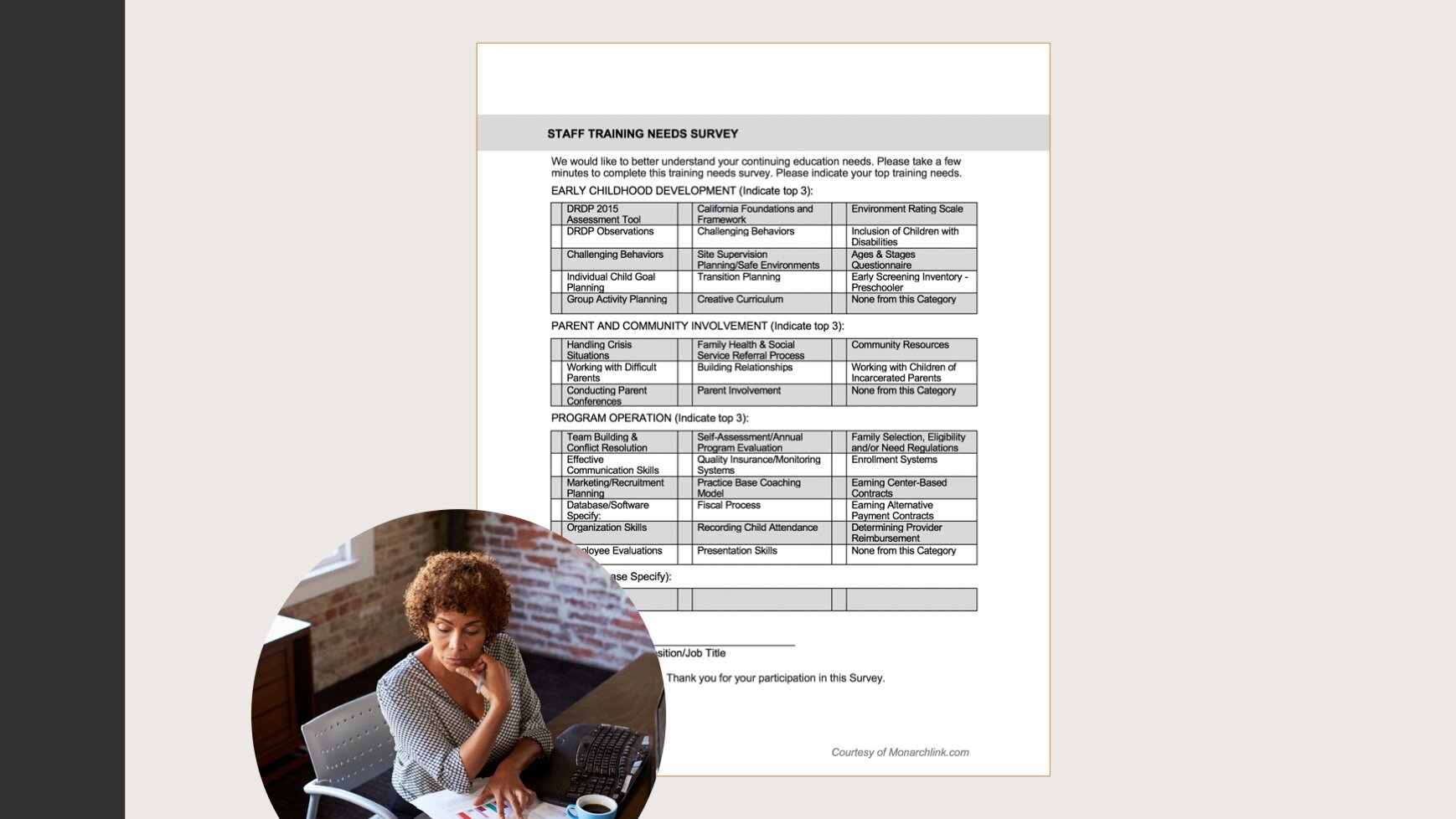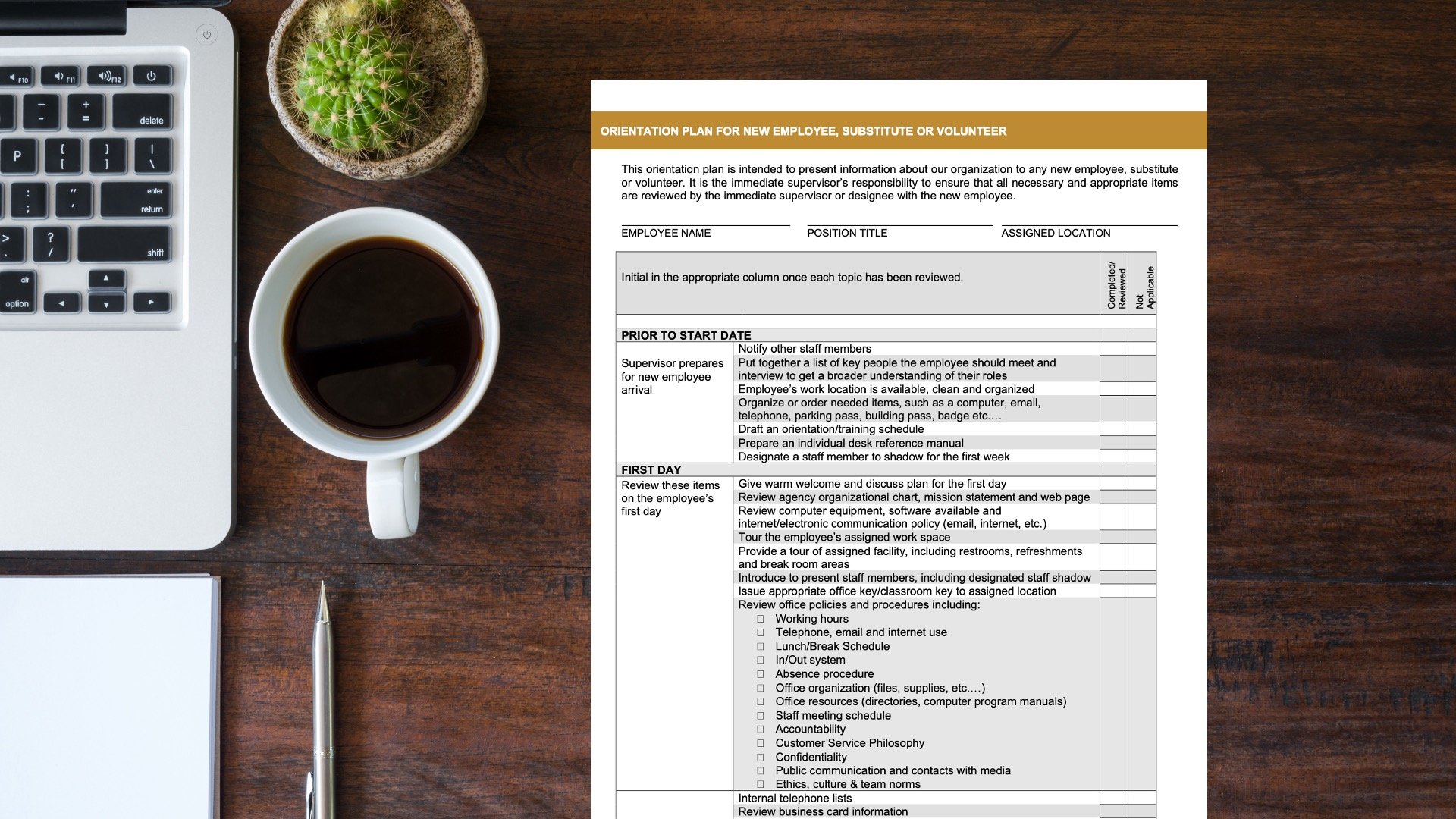Lesson
Dashboard
Lesson 1
Family Selection
Lesson 2
Family Data File
Lesson 3
Attendance
Lesson 4
Parent Involvement & Education
Lesson 5
Health & Social Services
Lesson 6
Site Licensure & License Exempt
Lesson 7
Staff-Child Ratios
Lesson 8
Classroom Assessment System
Lesson 9
Nutritional Needs
Lesson 10
Desired Results Profile & Data
Lesson 11
Qualified Staff & Director
Lesson 12
Staff Development Program
Compliance
Indicator
The program has developed & implemented a staff development component.
Regulations/Reference
EED Program Instrument: III. Program Quality EED 18
Education Code: 8203, 8205, 8207, 8231, 8251, 8295 & 8298
Title 5: 17700 (bg) & 17704
Monitoring Review Evidence
Identification of Staff Development and Training Needs
Records of Implemented Staff Training and Professional Development
Written Job Descriptions
Orientation Plan for New Employees
Annual Written Performance Evaluation
Watch Video Lesson ❯
Sample Forms/Tools ❯
Tools | Planners
Training & Resource Guides
Review Sketch Pad Notes ❯
Identifying Training Needs
To ensure an effective training program is in place, an assessment process that serves as a diagnostic tool for determining what training needs to take place should be conducted annually as part of the Program Self-Evaluation.
Staff surveys may also be used to gather data to determine what training needs to be developed to help individuals & the organization accomplish their goals & objectives.
What this might look like in a program:
Program staff assess Program Self-Evaluation data to identify training needs of staff & service providers.
Staff Training Needs Survey is completed during final quarter of the fiscal year in order to plan for professional development opportunities that align with staff needs.
Training Plan for Professional Development
Once data is compiled, it’s time to develop your training plan. The regulations state that contractors must provide staff development opportunities that include topics related to:
Identified gaps during the program self-evaluation
Functions specified in each employee's job description
Training needs identified by staff
Contractors must maintain records of implemented staff trainings that might include:
Agendas
Handouts
Fliers
Certificates
Participant sign in sheets
What this might look like in a program:
Contractors may use the Program Planning & Monitoring Guide to outline a training plan within each item that includes the pathway lesson applicable to the item, along with items that need to be self-reviewed or shown one-on-one for a new employee. We also include any group trainings that are offered each year.
Contractors may use a Monthly Planner to communicate professional development opportunities available for the given month.
Written Job Description
For every staff position at an organization there must be a corresponding job description that accurately & fully describes the job.
A well written job description not only describes the position’s responsibilities, it supports effective human resources management in a variety of ways. It sets the foundation for recruiting, developing strategies & retaining talent & also sets the stage for optimum work performance by clarifying responsibilities, expected results & evaluation of performance.
Orientation Plan for New Employees
Orientation is important because it lays a foundation for the new employee’s entire career within your organization. First impressions are important since they establish the basis for everything that follows.
An orientation encourages employee confidence & helps the new employee adapt faster to the job.
What this might look like in a program:
At a minimum an agency should have an orientation checklist, to assist supervisors in sharing information and developing a plan to orient a new employee. This helps ensure they have realistic timelines to address all elements to make them successful from a walk-around, basics of desk set up and plan for the next couple of weeks from self-paced trainings on the pathways platform to shadowing designated staff members.
Internal Communication System
An internal communication system must be in place to provide each staff member with the information necessary to carry out his or her assigned duties. Internal communication is the life blood of any organization. A communication system might include:
Written Policies & Procedures
Online Employee Platform
Team Meetings
Memos
Monthly Planner
What this might look like in a program:
The Program Planning & Monitoring Guide is a great tool to communicate the overarching strategies used to meet compliance for state program operation, as this aligns with the department’s monitoring instrument
The Monthly Planner may be used to reduce the noise. To replace the many emails, documents, spur of the moment scattered communications into a systemized approach of disseminating information.
Performance Evaluation
According to the regulations, an annual performance evaluation process is required, unless a different frequency of performing evaluations is specified in a contractors collective bargaining agreement with their employees.
An annual evaluation is instrumental in determining whether an employee’s skill set is appropriately matched to the employees job.
Complete Knowledge Check ❯
After reviewing the video lesson & sketch pad notes, it’s time to check for understanding by completing a Knowledge Check. Note that Individual Knowledge Checks will conclude with a Certificate.









